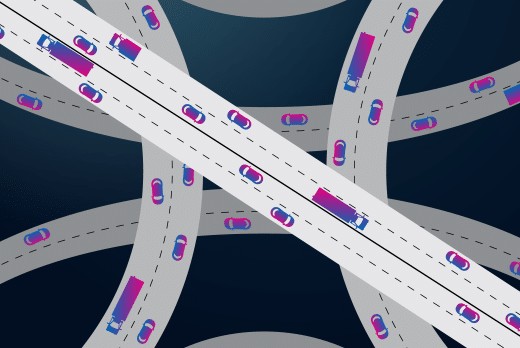By Rick Halton, VP Product & Marketing, Lumeon
The Business Case for Connecting the Patient Journey
Over half a century has passed since former U.S. President Dwight Eisenhower signed the Federal Aid Highway Act, authorizing the construction of a vast network of more than 40,000 interstate highways across the nation. The Interstate Highway System as we know it today has dramatically changed the U.S. economy since its construction. By eliminating unsafe roads, inefficient routes and traffic jams, it allowed businesses to transport goods to market more efficiently, lower transportation and production costs, improve productivity, and overall, profit the national economy.
Decades later, many industries still have a lot to learn from this notion of paving a pathway to enhance business through the efficient flow of goods and services – including the healthcare industry and the way it delivers care.
Care Pathway Management: The Highway System for Healthcare
Fragmentation within the U.S. healthcare system has rendered it helpless. Friction across care processes has stunted health providers’ business growth in endless ways – from increasing operational costs and squeezing margins, to preventing their transition to alternative payment models, and hindering effective management of patients with complex chronic conditions.
New payment models and rising costs mean that providers need a system that can deliver care in an entirely new way. The key is to add efficiency, by connecting a network of people, processes and existing technology both within and between care settings. This real-time orchestration of the end-to-end care journey – what Lumeon calls Care Pathway Management – can play a pivotal role in reducing the friction and high costs that are inhibiting health providers’ businesses today.
Perhaps the most significant outcome of efficient Care Pathway Management is better utilization of care teams. Based on the requirements of a patient’s specific care pathway, teams can be optimally deployed to do exactly what’s needed at exactly the right time, while manual and repetitive tasks are automated.
For instance, instead of dedicating resources to chasing down whether a patient has completed a screening form, or reminding them to fast before surgery, processes like these can be tracked automatically. Automation also generates situational awareness that can tell care teams where a patient is in his or her care journey, which tasks have been accomplished, and what needs to happen next.
Similar to how the highway system optimized vehicle capacity and traffic flow, boosting the efficiency of interstate commerce and leading to economic profitability, care pathways improve the capacity of care teams and the flow of tasks to allow for more efficient delivery of care, generating greater throughput of patients, and ultimately, increasing providers’ revenue.
Putting it into Practice
Let’s look at a few examples of how certain care pathways can improve health providers’ bottom line.
Patient recall can generate quick wins for health providers, but relying on staff to remember to follow up with patients can result in missed revenue opportunities from regular check-ups. By using automation and priority scores to track and manage patient recall – either for annual checkups or urgent recall based on test results, health providers can generate revenue quickly and cost effectively. One client uses Lumeon to ensure that over 80% of their eligible patients are committed to annual assessments.
- End-to-end chronic disease management requires health providers to design and automate longitudinal pathways that can guide patients and care teams across the various stages of chronic condition intervention and management. Health providers can improve utilization of care management teams when they segment patients and encourage individualized risk-reducing behaviors through virtual consultations, medication reminders and coaching using educational resources, for instance. Meanwhile, human intervention is carefully directed in response to significant changes in the patient. With Lumeon, it is typical to see a tripling in the number of patients managed by every case manager.
- Pre-operative readiness requires health providers to design and proactively manage a pre-surgical plan of care to tackle costly but avoidable issues such as delayed or canceled procedures that leave operating rooms underutilized. Providers can coordinate care team activity leading up to surgery, ensuring the patient is engaged and prepared to come in for the surgery through things like patient appointment and task reminders. The impact has been proven, including by a recent Lumeon client collaboration that identified a $3.6 million annual saving by reducing Operating Room no-shows.
The rise of value-based payment models is creating a mind shift amongst health providers. It’s no longer enough to think only about the services they bill for – instead, they must become accountable for what happens at each step of the patient’s care journey, from referral to outcome. It’s not an easy transition when you consider the siloed nature of today’s healthcare system and the exorbitant operational costs of managing personalized patient care during long periods of time.
To overcome these hurdles, U.S. healthcare needs its own superhighway that can get patients from point A to point B, efficiently and safely, in a way that feels seamless and in control for the patient while reducing friction for the provider and boosting their bottom line. This is the promise of Care Pathway Management.


